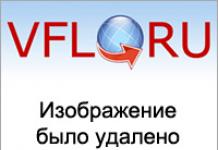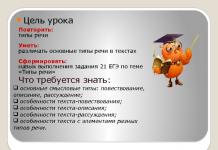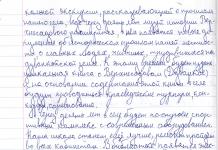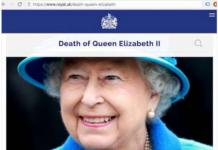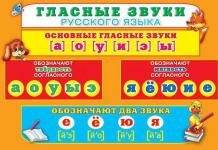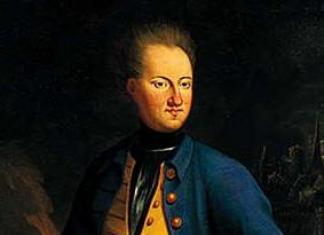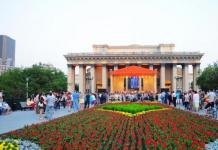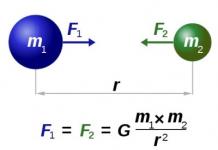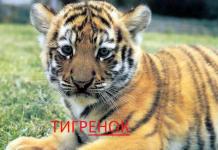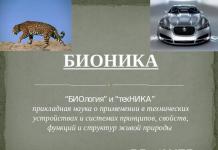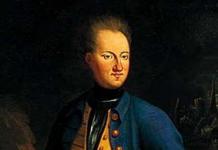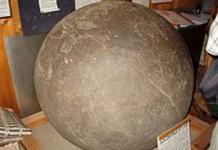In the construction of text and speech in general, a lot depends on what task the speaker (writer) sets for himself, on the purpose of the speech. It is quite natural that the author will structure his text differently when he talks about an event, describes the nature or explains the causes of any phenomena.
Over the centuries, functional and semantic types of speech were gradually formed, that is, methods, patterns, verbal structures that are used depending on the purpose of speech and its meaning.
The most common functional and semantic types of speech are description, narration and reasoning. Each of these types is distinguished in accordance with the purpose and content of speech. This also determines some of the most typical grammatical means of text design.
| Purpose of creating text | Content and form of text | Typical grammatical means |
|---|---|---|
| Text type: Description | ||
| 1) Enumeration of signs, properties, elements of the subject of speech. 2) An indication of its belonging to a class of objects. 3) An indication of the purpose of the item, methods and areas of its functioning. |
1) An idea of the subject as a whole is given at the beginning or at the end. 2) Detailing of the main thing is carried out taking into account the semantic significance of the details. 3) The structure of individual parts of the text (description elements) is similar to the structure of the text as a whole. 4) Techniques of comparison, analogy, and contrast are used. 5) The text is easily collapsed. |
a) with direct word order; b) compound nominal predicate; c) with verbal forms of simultaneous action; d) with present tense verbs in a timeless meaning; e) with defining characteristics. |
| Text type: Narration | ||
| A story about an event showing its course in development, highlighting the main (key) facts and showing their relationship. | 1) A logical sequence is observed. 2) Dynamism and change of events are emphasized. 3) The composition is chronological. |
Simple and complex sentences: a) with a perfect verb predicate; b) with species-temporal forms emphasizing the nature and change of events; c) with the expression of cause-and-effect and temporal conditionality. |
| Text type: Reasoning | ||
| Study of the essential properties of objects and phenomena, substantiation of their relationship. | 1) There is a thesis (the position that is being proven), arguments (judgments that justify the correctness of the thesis) and a demonstration (method of proof). 2) Reflections, inferences, and explanations are used. 3) The semantic parts of the statement are given in a logical sequence. 4) Everything not related to the proof is omitted. |
Simple common and complex sentences: a) with participial and participial phrases; b) with circumstances or adverbial subordinate clauses of cause, effect, purpose; c) with verbs of different aspect forms. |
Let us demonstrate the structure and method of design of different functional and semantic types of texts using the following examples.
As an example description text An excerpt is taken from the story by A.S. Pushkin’s “The Captain’s Daughter” with a description of the appearance of Emelyan Pugachev:
His appearance seemed remarkable to me: he was about forty, average height, thin and broad-shouldered. There was a streak of gray in his black beard; the lively big eyes kept darting around. His face had a rather pleasant, but roguish expression. The hair was cut into a circle; he was wearing a tattered overcoat and Tatar trousers.
Describing the appearance of a person still unknown to him, Pyotr Grinev first of all conveys his impression of this appearance, highlighting those details that seemed most remarkable to him. Thus, a general idea of the stranger is given at the beginning of the description: His appearance seemed remarkable to me. This is followed by the characteristics of the hero: age, physique, face, hair and elements of clothing. The author strives not only to give an idea of Pugachev’s appearance, but also to show how, based on these details, one can form an opinion about his lifestyle, character, and behavior. For example, a strong physique clearly indicates an active lifestyle. Hairstyle and clothing indicate the social status of the stranger: this is a poor Yaik Cossack. But the author pays main attention to the expression of the eyes. It is from this detail that the reader can understand that Pugachev has a lively mind. This is not a villain, on the contrary, his appearance is attractive, but at the same time, Grinev’s counselor is clearly hiding something (cf.: shifty eyes and roguish facial expression).
If we turn to the grammatical means of text design, we can state the following. When describing, simple sentences or chains of complex non-union sentences with direct word order predominate. In addition, compound nominal predicates attract attention: seemed wonderful; he was about forty, of average height, thin and broad-shouldered; were shorn. Verbs (mostly imperfect) indicate simultaneity of action. The use of past rather than present forms in a timeless sense is due to the fact that the narrator is narrating a meeting that occurred in the past ( was about forty; his eyes were darting; the face had an expression; hair was cut; he was wearing an army coat). Finally, in almost every sentence one can find members with various kinds of defining characteristics: remarkable; thin, broad-shouldered, black beard; big lively eyes etc.
In the same story A.S. Pushkin meet and microtexts-narratives, For example:
I actually saw a white cloud at the edge of the sky, which I initially mistook for a distant hill. The driver explained to me that the cloud foreshadowed a snowstorm.
I heard about the blizzards there, that entire carts were covered in them. Savelich, in agreement with the driver’s opinion, advised him to turn back. But the wind did not seem strong to me; I hoped to get to the next station in time and ordered to go quickly.
The coachman galloped off; but he kept looking to the east. The horses ran together. Meanwhile, the wind became stronger hour by hour. The cloud turned into a white cloud, which rose heavily, grew and gradually covered the sky. It began to snow lightly and suddenly fell in flakes. The wind howled; there was a snowstorm. In an instant, the dark sky mixed with the snowy sea. Everything has disappeared. “Well, master,” the coachman shouted, “trouble: a snowstorm!”...
I looked out of the wagon: everything was darkness and whirlwind. The wind howled with such ferocious expressiveness that it seemed animated; the snow covered me and Savelich; the horses walked at a pace - and soon stopped.
This microtext tells about the snowstorm that Grinev got into while traveling to his place of duty. The description of the snowstorm in this case is given precisely as a narrative, since the logical sequence of events is clearly observed, and the entire composition is chronologized: a white cloud appears in the sky; Grinev, despite the hesitation of the coachman and Savelich, decides to continue the journey; the coachman lets the horses gallop; the wind is getting stronger; a snowstorm begins; the blizzard turns into a blizzard; the exhausted horses stop. The change of events in time is expressed using perfective verbs: I saw a cloud; I ordered to go quickly; the coachman galloped off; the cloud turned into a white cloud; it is snowing etc. The same events that are included in the same time period are described using sentences with imperfective verbs (cf.: I heard; Savelich advised etc.). Sentences with perfective verbs are indicators of key facts, signaling the replacement of one event by another, and each new event is thought of in connection with the previous one (in this case, this connection is chronological).
Specifics text-reasoning can be demonstrated by the example of Grinev’s thoughts on the road after losing a hundred rubles to Zurin and a quarrel with Savelich:
My thoughts on the road were not very pleasant. My loss, at the prices at that time, was significant. I could not help but admit in my heart that my behavior in the Simbirsk tavern was stupid, and I felt guilty before Savelich. All this tormented me.
The argument begins with a thesis statement: My thoughts on the road were not very pleasant. And although further we do not find subordinate reasons, the very arrangement of subsequent conclusions is perceived as an explanation of the reasons for Grinev’s dissatisfaction with himself. The arguments are the amount of loss, “stupid” behavior and a feeling of guilt towards the old servant. In conclusion, a conclusion is made about the narrator’s internal state, which is perceived as a consequence of “sorrowful conclusions”: All this tormented me.
In general, the most striking examples of reasoning can be found in scientific texts (see the excerpt from the book by Yu. M. Lotman given in exercise 123).
Of course, the text may contain different functional and semantic types of speech. Thus, very often narration is combined with description (this can be seen in the example of the given passages). Complementing each other, they often merge so organically that sometimes it is difficult to differentiate between them. Wed. a combination of these types of speech in an excerpt from the story of I.S. Turgenev "Bezhin Meadow":
I went right through the bushes[narration]. Meanwhile, the night was approaching and growing like a thundercloud; it seemed that darkness was rising from everywhere along with the evening vapors and even pouring from above[description]. I came across some kind of unmarked, overgrown path; I walked along it, carefully looking ahead[narration]. Everything around turned black and died down, only the quails screamed occasionally[description]. A small night bird, silently and low rushing on its soft wings, almost stumbled upon me and timidly dived to the side. I went out to the edge of the bushes and wandered across the field between[narration]. I was already having difficulty distinguishing distant objects; the field was vaguely white around; behind it, looming in huge clouds every moment, rose the gloomy darkness. My steps echoed dully in the frozen air. The pale sky began to turn blue again - but it was already the blue of night. The stars flashed and moved on it[description].
There are three main types of speech in function and meaning: description, narration and reasoning.
Description is a depiction in speech of objects, natural phenomena, people, animals, etc. The description lists the signs, properties, and features of objects. For example, a description of a person’s appearance is his verbal portrait; a description of character traits and its manifestations in human behavior is a characteristic; landscape is a description of nature, and interior is an image of the interior furnishings of a room.
Description is always static; the depicted object is out of time, as if photographed. There are few verbs in the description, and, as a rule, they have an imperfect form and denote a process or passive (but not active) action: appears, happens, is seen, has, blows, shines, relates, serves etc.
The description of the same subject can be made for different purposes.
A scientific description is a depiction of an object or phenomenon in order to show its originality. As a rule, scientific descriptions are comprehensive; they present the subject from various angles, in its connections and relationships with similar subjects. A linguist describing a single word will compose a text of several pages: it is necessary to indicate all the meanings of this word, its sound composition and pronunciation features, the correspondence of the pronunciation to the spelling; it is necessary to explain the history of the word, its structure, typical and atypical roles for it in a sentence, the possible participation of this word in stable turns of speech, then its synonymous and antonymic connections, the presence or absence of homonyms, paronyms; and finally, you need to give several examples demonstrating each of the described features of the word.
A type of scientific description is a definition, or definition; this is a relatively brief explanation of the specifics of an object, i.e. those properties that distinguish an object from all others, for example:
A story, as a work of small epic form, usually tells about one event, constituting a separate episode in a person’s life. Therefore, the volume of the story and the number of characters are small.
The laconicism of the narration in the story is combined with the special expressiveness of the image. The author reveals the essence of the image through a single, but characteristic incident from the hero’s life. (T. Zharov.)
A business description is less extensive than a scientific one. As a rule, not all properties of an object are described, but only those that are of business interest. For example, in a business description of a book, attention will be paid not so much to its content as to consumer demand for it, price, circulation, delivery options, etc.
Artistic description depends on the creative approach of the author. He can focus on one detail that characterizes the subject more deeply and completely than many others. Or vice versa: the writer depicts many different objects to create an overall picture, for example a picture of the morning:
It was a quiet summer morning. The sun was already quite high in the clear sky. But the fields still glistened with dew; A fragrant freshness wafted from the recently awakened valleys, and in the forest, still damp and quiet, the early birds sang merrily. At the top of a gentle hill, covered from top to bottom with newly blooming rye, a small village could be seen. (T.)
A narrative is a story about how an event happened or is happening. Unlike a static description, a narrative necessarily has a plot and conveys the dynamics of the action, which is usually presented in a sequential development: beginning, continuation, end. These phases are conveyed using special words, among them many adverbs with the meaning of time: once, one day, at first, all of a sudden, as soon as, then, Then, Then, here, finally etc. The narrative contains many perfect and imperfect verbs with the meaning of active action: saw, spoke, began, thought, answered, went, took, stayed etc. A distinctive feature of the narrative is also the presence of dialogues and direct speech.
If the description can be compared to a photograph, then the narrative is similar to a plot film:
At half past eleven, from the north-west, from the direction of the village of Chmarovka, a young man of about twenty-eight entered Stargorod. A homeless man was running after him.
Uncle,” he shouted cheerfully, “give me ten kopecks!”
The young man took a heated apple from his pocket and gave it to the homeless man, but he did not lag behind. Then the pedestrian stopped, looked ironically at the boy and said quietly:
Maybe I should give you another key to the apartment where the money is?
The presumptuous homeless man realized the groundlessness of his claims and fell behind. (I. and P.)
A type of narrative is a message; This is an oral presentation or text whose purpose is to inform listeners about something. With the help of a message, they bring to the attention of listeners something unknown to the entire audience or its majority. This could be political news, historical information, scientific information, as well as events that happened among friends, relatives, neighbors or employees.
The message can be constructed as a regular narrative or as an information note, that is, an announcement about an event and its circumstances (time, place, purpose) in a brief form. Most often, an information certificate consists of two parts: the first contains the news itself, and the second contains a commentary necessary for understanding.
The National Library of China has begun reprinting 556 rare medieval scrolls. All the scrolls belong to two eras of Chinese imperial dynasties - the Ming Dynasty and the Chin Dynasty, which ruled China from 1368 to 1911. The work will continue over the next three years. To resemble the original, the books will be printed on rice paper and bound with blue threads, as was customary in China in the Middle Ages. (From a television news program.)
A message achieves its goal only if the information contained in it is relevant or interesting to the recipients of the speech.
Reasoning is a conclusion about a phenomenon or event, its analysis. Reasoning necessarily reveals the position of the author of the speech. His opinion is presented here most fully if we compare reasoning with description and narration.
Typically, a reasoning consists of two parts - a thesis and its proof. The reasoning may also contain a third part - conclusions, generalizations.
A thesis is a briefly formulated main idea or belief of the author. As proof, he can cite various arguments, observations, comparisons, comments, and explanations.
Reasoning is logical in nature, therefore sentences and their parts consist of each other in various logical relationships: cause - effect, condition - effect, goal - cause, opposition, comparison, etc. Introductory words are often used indicating the order of thoughts ( Firstly Secondly), adverbs and complex conjunctions ( therefore, whereas, that's why, due to the fact that, since, because). Verbs, as in the description, do not indicate dynamic action. The means of connecting sentences are often lexical repetitions, uniformity of syntactic constructions, and antonyms:
Poetry is the highest kind of art. Every other art is more or less constrained and limited in its creative activity by the material through which it is manifested. Poetry is expressed in the free creative word, which is sound, a picture, and a definite, clearly spoken idea. Therefore, poetry contains all the elements of other arts. (V. Belinsky.)
It must be taken into account that description, narration and reasoning do not always appear in their pure form. Different types of speech can be combined in one text: description with reasoning, narration with description, narration with reasoning. Here is an example of a text in which the narration is interrupted by a description (narration with descriptive elements):
Lieutenant of the Tengin infantry regiment Lermontov was going to the Caucasus, into exile, to the Grozny fortress. Spring turned out to be unlike ordinary Russian springs. Bird cherry blossomed late in the dead gardens. And the rivers were belated and for a long time could not enter the banks. The spills delayed Lermontov. (Paust.)
T16. You cannot beg ready-made beliefs from good friends., nor buy it in a bookstore. They must be developed through the process of one’s own thinking., which must certainly be accomplished independently in our own head.(Clerk.) What type of speech does this text belong to?
- 1) narration
- 2) description
- 3) reasoning
- 4) narration with elements of reasoning
T17. What is a type of description?
- 1) thesis
- 2) message
- 3) scientific definition
- 4) conclusions
Types of speech are varieties of language depending on what we want to convey in the text: tell, depict or prove something.
There are three types of speech: narration, description, reasoning. As a rule, speech types are rare in their pure form; they are usually combined.
Thus, for example, a narrative may include elements of description, or a description may include elements of reasoning.
Narration
To the texts of the narrative, you can ask the question: what happened?
The purpose of narrative texts is to tell about an event, a fact of reality. The narrative texts reflect several episodes and events interconnected.
Narrative texts are structured according to the following scheme: exposition, plot, development of action, climax, denouement. One of the properties of storytelling is dynamism. The leading part of speech is a verb, which allows you to convey dynamics, as well as special words with the meaning of time (first, then, then, in the morning, in the evening, etc.).
The basis of the narrative is the unity of the temporal plan, that is, the verbs must be in the same tense and be of the same type. Narration is typically used in literary or conversational texts.
Description
For description tests, you can ask the question: what (what) is the subject?
The purpose of description tests is to describe objects. An image of an object or a description of a phenomenon is created by listing its characteristics. The object of description is static, there is no dynamics in the description.
The compositional scheme of the description text is as follows: beginning, main part, ending. At the beginning, as a rule, the subject of description is named, then the characteristics of the subject are listed, on the basis of which a complete image of the subject of description is formed, and at the end a conclusion is drawn - a general assessment of the subject.
The characteristics of an object are conveyed by adjectives, participles or predicate verbs. Just like narration, the unity of the types of time plan is important in the description. As a rule, simple sentences are used in the description, although often complex ones are used.
Description is used in texts of any style.
Reasoning
For reasoning tests, you can ask the question why? The purpose of description tests is to affirm or deny any fact, phenomenon, concept; in addition, the reasoning texts reveal cause-and-effect relationships between phenomena.
The texts of the argument are constructed according to the following scheme: thesis, arguments, conclusion. The thesis is the main idea that is proven in the text, the arguments are the evidence with which the thesis is proven, the conclusion is the result of reflection.
Texts of reasoning can be divided into reasoning-proof (why?), reasoning-explanation (what is it?), reasoning-reflection (how to be?). Any vocabulary is used in reasoning; the unity of the species-time plan is not important for reasoning. Reasoning is used in texts of any style.
Types of visual and expressive means
Tropes (based on the lexical meaning of the word)
Epithet- a word that defines an object or phenomenon and emphasizes any of its properties, qualities, characteristics. Typically an epithet is used to describe a colorful definition:
Your thoughtful nights are transparent twilight (A.S. Pushkin).
Metaphor- a trope in which words and expressions are used in a figurative meaning based on analogy, similarity, comparison:
And my tired soul is enveloped in darkness and cold (M. Yu. Lermontov).
Comparison- a trope in which one phenomenon or concept is explained by comparing it with another. Usually comparative conjunctions are used:
Anchar, like a formidable sentinel, stands alone - in the entire universe (A.S. Pushkin).
Metonymy- a trope based on the replacement of one word with another of similar meaning. In metonymy, a phenomenon or object is denoted using other words or concepts, while their connections and characteristics are preserved:
The hissing of foamy glasses and blue flames of punch (A.S. Pushkin).
Synecdoche- one of the types of metonymy, which is based on the transfer of meaning from one object to another based on the quantitative relationship between them:
And you could hear until dawn how the Frenchman (meaning the entire French army) rejoiced (M. Yu. Lermontov).
Hyperbola- a trope based on excessive exaggeration of certain properties of the depicted object or phenomenon:
For a week I won’t say a word to anyone, I keep sitting on a stone by the sea (A. Akhmatova).
Litotes- trope opposite to hyperbole, artistic understatement:
Your Spitz, your lovely Spitz, is no bigger than a thimble (A. Griboyedov).
Personification- a trope based on the transfer of properties of animate objects to inanimate ones:
Silent sadness will be consoled, and joy will be playful and reflective (A.S. Pushkin).
Allegory- a trope based on replacing an abstract concept or phenomenon with a concrete image of an object or phenomenon of reality:
Medicine is a snake wrapped around a cup, cunning is a fox, etc.
Periphrase- a trope in which the direct name of an object, person, or phenomenon is replaced by a descriptive expression that indicates the characteristics of a not directly named object, person, or phenomenon:
The king of beasts is the lion.
Irony- a technique of ridicule that contains an assessment of what is being ridiculed. Irony always has a double meaning, where the truth is not what is directly stated, but what is implied:
Count Khvostov, a poet beloved by heaven, was already singing in immortal verses the misfortunes of the Neva banks (A.S. Pushkin).
Stylistic figures
They are based on a special syntactic structure of speech.
Rhetorical appeal- giving the author’s intonation solemnity, pathos, irony, etc.:
O you, arrogant descendants... (M. Yu. Lermontov).
A rhetorical question- a structure of speech in which a statement is expressed in the form of a question. A rhetorical question does not require an answer, but only enhances the emotionality of the statement:
And will a beautiful dawn finally rise over the fatherland of enlightened freedom? (A.S. Pushkin)
Anaphora- repetition of parts of relatively independent segments, otherwise anaphora is called unity of beginning:
It’s as if you curse the days without light, as if the gloomy nights frighten you (A. Apukhtin).
Epiphora- repetition at the end of a phrase, sentence, line, stanza.
Antithesis- a stylistic figure based on opposition:
And day and hour, both in writing and orally, for the truth, yes and no... (M. Tsvetaeva).
Oxymoron- combination of logically incompatible concepts:
Living corpse, dead souls, etc.
Gradation- grouping of homogeneous members of a sentence in a certain order: according to the principle of increasing or decreasing emotional and semantic significance:
I do not regret, do not call, do not cry. (S. Yesenin)
Default- deliberate interruption of speech in anticipation of the reader’s guess, who must mentally complete the phrase:
But listen: if I owe you... I own a dagger, I was born near the Caucasus. (A.S. Pushkin)
Nominative themes (nominative representations)- a word in the nominative case or a phrase with the main word in the nominative case, which stands at the beginning of a paragraph or text and in which the topic of further discussion is stated (the name of the subject is given, which serves as the topic of further discussion):
Letters. Who likes to write them?
Parcellation- deliberate breaking of one simple or complex sentence into several separate sentences in order to draw the reader’s attention to the highlighted segment and give it (the segment) additional meaning:
The same experience has to be repeated many times. And with great care.
Syntactic parallelism- identical construction of two or more sentences, lines, stanzas, parts of text:
The stars shine in the blue sky,
The waves splash in the blue sea.
(sentences are constructed according to the following scheme: adverbial place with attribute, subject, predicate)
A cloud is walking across the sky, a barrel is floating in the sea. (A.S. Pushkin)
(sentences are constructed according to the following scheme: subject, adverbial place, predicate)
Inversion- violation of the generally accepted grammatical sequence of speech:
A lonely sail whitens in the blue fog of the sea. (M. Yu. Lermontov)
(according to the rules of the Russian language: A lonely sail whitens in the blue fog of the sea.)
Means of connecting sentences in the text
Lexical means:
- Lexical repetition- repetition of a word or use of a word with the same root. For scientific and official business texts, word repetition is the main means of communication. Quite often used in descriptions.
- Synonymous replacement- replacing a word in one sentence with a synonym or synonymous expression in another. It is usually used where colorful speech, its imagery, expressiveness are needed - journalistic, artistic styles.
- Two sentences can be related generic relations: genus as a broader concept, species as a narrower one.
There are many trees in this forest. But first of all, you notice the trunks of your favorite birch trees. - Using antonyms.
- Using words from the same thematic group.
There are many Karamazovs in Russian life, but still they do not direct the course of the ship. Sailors are important, but even more important for the captain and the sailboat is the tiller and the star towards which the ideal is oriented.
Getting ready for the Unified State Exam
TYPES OF SPEECH
Task 21.
Mikheeva Marina Aleksandrovna,
teacher of Russian language and literature,
OGKOU KSHI "Kolpashevo Cadet Corps"

- The purpose of the lesson
Repeat:
types of speech
Be able to :
distinguish the main types of speech in texts
Form :
skill in completing task 21 of the Unified State Exam on the topic “Types of speech”
What you need to know:
- main semantic types: narration, description, reasoning;
- features of the narrative text;
- features of the descriptive text;
- features of the argumentative text;
- features of the text with elements of different types of speech.

REMEMBER:
All texts are divided into three semantic types: narration, description, reasoning.
Narration –
this is a type of speech in which narrated, narrated about any events in their time sequence. Events in the story replace one another .
Narrative composition:
- the beginning of the action (the beginning of events);
- action development;
- climax (the highest tension of the action);
- denouement.

Features of narrative text
- a large number of verbs that convey movement, action;
- in a narrative text we can imagine the movement of action in time and space, therefore there are many adverbs of place and time in it;
- narration is characteristic of many styles (colloquial, artistic, scientific).
Example of a narrative text
I actually saw a white cloud at the edge of the sky, which I initially mistook for a distant hill. The driver explained to me that the cloud foreshadowed a snowstorm. I heard about the blizzards there, that entire carts were covered in them. Savelich, in agreement with the driver’s opinion, advised him to turn back. But the wind did not seem strong to me; I hoped to get to the next station in time and ordered to go quickly. The coachman galloped off; but he kept looking to the east. The horses ran together. Meanwhile, the wind became stronger hour by hour.
(“The Captain’s Daughter” by A.S. Pushkin)

Description –
this is a type of speech in which described anything depicted some phenomenon of reality. The description can list both general and specific characteristics, and express impressions about someone or something.
What can be described?
- portrait, that is, a description of a person’s appearance, his condition;
- landscape, that is, a description of nature, a specific corner of nature, or the state of nature in general at a given moment;
- interior, that is, the interior space of the room;
- thing, for example, a toy;
- an animal, for example, a beloved dog.
Description composition
- general idea of the subject of description
- individual characteristics of the subject of description
- may include the author's assessment, conclusion, conclusion

Features of the text - descriptions
- leading parts of speech - nouns, adjectives, participles;
- verbs are mainly used in the imperfect form, as they help convey the static, timeless nature of the description. Something is described at a given moment in time;
- sentences are often simple, incomplete and nominal ones can be used;
- The description provides answers to the questions: what is it like? where is it? (right, left, nearby), what is it like here? how does he feel? (good, bad, fun), what sensations and feelings does he have? (joyfully, cheerfully)
Example of a narrative text
His appearance seemed remarkable to me: he was about forty, average height, thin and broad-shouldered. There was a streak of gray in his black beard; the lively big eyes kept darting around. His face had a rather pleasant, but roguish expression. The hair was cut into a circle; he was wearing a tattered overcoat and Tatar trousers.
(“The Captain’s Daughter” by A.S. Pushkin,
description of Emelyan Pugachev)

Reasoning –
is a type of speech by which something proven, explained some position or thought, talks about the causes and consequences of something, contains an assessment .
Composition of the text - reasoning
- a thesis is an idea that needs to be proven or refuted
- arguments, arguments, evidence, examples
- Conclusion
Types of reasoning
- reasoning - proof: why is it this way and not otherwise? what follows from this?
- reasoning - explanation: what is it? (interpretation of a concept, explanation of the essence of something)
- reasoning - thinking: what to do? what to do? (thoughts are given on some problem or issue)

Features of the text - reasoning
- A large place is occupied by introductory words that help to consistently present thoughts, indicate the connection of thoughts (firstly, thus, so, therefore)
- Quite complex syntax (presence of isolated members, introductory constructions, complex sentences)
An example of a reasoning text
My thoughts on the road were not very pleasant. My loss, at the prices at that time, was significant. I could not help but admit in my heart that my behavior in the Simbirsk tavern was stupid, and I felt guilty before Savelich. All this tormented me.
"The Captain's Daughter" by A.S. Pushkin

It should be remembered that the boundaries between types are arbitrary. It is rare that a text can be classified into only one specific type. Combinations of speech types in a wide variety of variants are much more common: description and narration; description and reasoning; description, narration and reasoning; description with elements of reasoning; narration with elements of description and others.
These are the types of tasks that often appear on the Unified State Exam: you need to prove the correctness of a statement that names a combination of speech types.
For example:
In sentences 2-8 - reasoning with elements of description.
In sentences 17-25 there is a description with elements of reasoning.
Carrying out a task № 21 , remember what the features of each type of speech are, find them in these sentences.

- Example text with narrative and descriptive elements
- I went right through the bushes [ narration ]. Meanwhile, the night was approaching and growing like a thundercloud; It seemed as if, along with the evening vapors, darkness was rising from everywhere and even pouring from above [ description] . I came across some kind of unmarked, overgrown path; I walked along it, carefully looking ahead [ narration ]. Everything around turned black and died down, only the quails screamed occasionally[ description ]. A small night bird, silently and low rushing on its soft wings, almost stumbled upon me and timidly dived to the side. I went out to the edge of the bushes and wandered across the field between [ narration ]. I was already having difficulty distinguishing distant objects; the field was vaguely white around; behind it, looming in huge clouds every moment, rose the gloomy darkness. My steps echoed dully in the frozen air. The pale sky began to turn blue again - but it was already blue nights. The stars flickered and moved on it [ description ].
- “Bezhin Meadow” by I.S. Turgenev.
Send your good work in the knowledge base is simple. Use the form below
Students, graduate students, young scientists who use the knowledge base in their studies and work will be very grateful to you.
Posted on http://www.allbest.ru/
Educational institution
"Belarusian State Pedagogical University named after M. Tank"
Specialty “Geography. Protection of Nature"
Faculty of Natural Sciences
Extramural
Essay
in the discipline "Culture of Speech"
on the topic of: « Types of speech: description, narration and reasoning"
Completed by student gr.401
Lebed T.N.
Introduction
Chapter 1. Description
Chapter 2. Narration
Chapter 3. Reasoning
Conclusion
Bibliography
Introduction
Speech culture is a separate discipline in educational institutions. The essence of speech culture is to make a person’s speech correct, that is, literate, corresponding to the norms of the language. As a science, speech culture belongs to linguistics and studies the normalization of literary language.
The problem of a person’s knowledge of functional types of speech is very relevant. We communicate a lot with different people: at home, at work, in various public places, and the ability to competently structure our speech is of great importance. The ability to understand other people is also important. We need all this so that we are correctly understood, so that a person, reading any work, listening to someone, has the most complete and clear idea of what is being discussed, and can better understand the problem. Knowledge of functional types of speech is necessary for creating literate texts in accordance with the tasks of communication in various areas of human activity, for competent speaking to the public.
The process of communicative development of a personality is impossible without the formation of a theoretically clear idea of the functional-semantic typology of speech, without developing the ability to analyze a text from the point of view of its belonging to a certain type, the ability to create texts in accordance with the communicative-functional, compositional, structural, lexical and grammatical characteristics of a particular type. other functional type of speech.
In this work we will talk about functional types of speech: description, narration, reasoning. The characteristic features of each type of speech will be considered, definitions of these types will be given, and examples of use will be given.
The tasks facing this work:
Provide a basic definition based on multiple sources;
Describe the types of speech, explain the relevance of this topic, and show examples of the use of types of speech.
Speech is specific speaking that occurs in audio (including internal pronunciation) or in written form.
Type of speech - a method of presentation chosen by the author and oriented (depending on the content of the statement and the nature of the textual information) towards one of the tasks: to statically depict reality, to describe it; dynamically reflect reality, talk about it; reflect the cause-and-effect relationships of reality phenomena. In accordance with these communication goals, three main types of speech are distinguished: description, narration, reasoning.
Chapter 1. Description
Description- type of speech: verbal image of an object, phenomenon or action through the presentation of its characteristic features; one of the functional-semantic types of speech along with narration and reasoning.
Purpose of the description- visually draw a verbal picture so that the reader can visually imagine the subject of the image.
Description differs from other types of text in that it gives an idea of a phenomenon, object, person, state, action by listing their signs and properties. The role of description is different in fiction, poetry, journalism, and official business speech. In a work of art, description (along with narration) is one of the most common components of the author’s monologue.
Usually the following types of description are distinguished:
· portrait- image of the character’s appearance (face, figure, clothes, demeanor, etc.).
For example:
Long and thin, with a wide forehead, a flat upward, pointed downward nose, large greenish eyes and drooping sand-colored sideburns, it [Bazarov’s face] was enlivened by a calm smile and expressed self-confidence and intelligence (I. Turgenev);
A dynamic portrait that depicts the facial expression, eyes, facial expressions, gestures, posture, actions and states of the character: A strange smile distorted his face, a pitiful, sad, weak smile... (F. Dostoevsky);
· psychological picture- a description of the character’s internal state, allowing the author to reveal the hero’s inner world or emotional experiences.
For example:
His eyes did not laugh when he laughed (M. Lermontov);
· scenery- a description of nature as part of the real environment in which the action takes place.
For example:
The fields are compressed, the groves are bare. Above the water there is fog and dampness... (S. Yesenin);
· interior- image of the interior of the room.
For example:
In the middle of the room is a table, heavy as a tomb, covered with a white tablecloth, and on it are two cutlery, napkins folded in the form of papal tiaras, and three dark bottles (M. Bulgakov).
Image of the place and time of the action.
For example:
The village is scattered randomly between the peat lowlands - monotonous, poorly plastered barracks from the thirties and, with carvings on the facade, with glazed verandas, houses from the fifties (A. Solzhenitsyn).
In a literary text, description performs various functions. Thus, a description of nature often depicts the atmosphere of the action and helps to comprehend the character’s state. It can be in harmony with the hero’s inner world.
For example:
And he looked around, as if wanting to understand how one could not sympathize with nature. It was already evening; the sun disappeared behind a small aspen grove that lay half a mile from the garden (I. Turgenev).
Or discord with him.
For example:
The sky was without the slightest cloud, and the water was almost blue, which is so rare on the Neva. The dome of the cathedral was shining, and through the clear air one could clearly see even each of its decorations. An inexplicable coldness always blew over him [Raskolnikov] from this magnificent panorama (F. Dostoevsky).
In journalism, documentary, accurate reproduction of details makes the reader seem like an eyewitness of what is happening.
For example:
A monument to a small brave creature with pointy ears - Moommi-Troll... A bronze figurine approximately half human height... (World Pathfinder magazine).
However, often the description is given through the perception of the author.
For example:
The airy, elven poet was a businesslike, extremely everyday person, grounded in all his habits. Fet's appearance, especially in his old years, was defiantly anti-poetic: overweight, heavy, with a rude, frowning, often grumpy face (Yu. Nagibin).
Description as an independent component of the composition of an artistic or journalistic text, as a rule, interrupts the development of the action, however, if the description is small in volume, it may not suspend the development of the action, but be organically included in the narrative (the so-called narrative with descriptive elements).
For example:
I followed the crowd into the church and saw the groom. He was a small, round, well-fed man with a paunch, very decorated. Finally there was talk that the bride had been brought. I pushed my way through the crowd and saw a wonderful beauty, for whom the first spring had barely arrived. They said that she was barely sixteen years old (F. Dostoevsky).
Artistic and journalistic description is characterized by the widespread use of linguistic expressive means (metaphors, personifications, comparisons, epithets, etc.).
For example:
Through the wide span of the window, the tiled roofs of Berlin were visible - their outlines changed, thanks to the irregular internal tints of glass - and among the roofs, a distant dome rose like a bronze watermelon. The clouds flew and broke through, revealing for a moment the light, amazed autumn blue (V. Nabokov).
In texts of official business style of speech there are such types of description as characteristics of the subject, its technical and informational description. In this case, the task is to accurately name the features of the described object or device, therefore, artistic and aesthetic means are always excluded from the business description.
For example:
The instant payment system machine is a vandal-resistant (that is, capable of withstanding aggressive influences while maintaining full functionality) device for accepting cash and transferring it to the accounts of service companies.
The leading role in the description is played by adjectives and participles, as well as nominative sentences, providing expressiveness and clarity of the image.
For example:
Shrub and small forest. An eerie late afternoon silence. Silent thickets (V. Peskov).
Verbs, participles and gerunds in descriptive texts are usually in the present tense, and the predicate, as a rule, is located after the subject.
For example:
The door to the porch is open (T. Tolstaya).
Description as a type of text (method of presentation), focused on a static reflection of the phenomena of reality, is the opposite of narration.
Chapter 2. Narration
Bynarration- type of speech: story, message about an event, action, phenomenon occurring in time; one of the functional-semantic types of speech along with reasoning and description.
Purpose of the story- give an idea of an event (a series of events) in chronological order or show the transition of an object from one state to another.
The peculiarity of narrative as a type of text is that it depicts events or phenomena in which actions do not occur simultaneously, but follow each other or condition each other.
For example:
On the way, Lidia Borisovna told how almost forty years ago she first came here, to the ashes of the Blokov estate. I got there with adventures, first by train, then by hitchhiking... I walked for a long time through the forest and almost got lost. I found a burnt foundation along three birch trees growing in a field on a hillock. She sat among the bushes, under a tall silver poplar, picked up a piece of brick from the foundation of a burnt house and brought it to Chukovsky. The old man pressed this piece to his cheek and said: “I never got out there to see Blok, but he called me to come.” Lidia Borisovna asked: “Korney Ivanovich, will this house never be restored?” He replied: “Lida, you have to live in Russia for a long time” (D. Rubina).
In a narrative, it is usually possible to determine the place and time of action, the character, the chronological sequence of what is happening, etc. The composition of the narrative, as a rule, is subordinated to the sequence of development of the author's thoughts and the task that the author sets for himself.
Examples The shortest narratives can be considered the famous letter of Caesar, telling about the rapid victory in the Battle of Zela (I came, I saw, I conquered), or the classic quote from the movie “The Diamond Arm”: I tripped, fell, woke up - plaster. They very accurately convey the essence of the narrative - the story of what happened.
· neutral(in scientific and official business styles of speech).
For example:
Birch is a deciduous tree. Grows in central Russia. Birch bark is used in folk crafts);
For example:
As if in a dream, I approach our birch tree. Hello! Didn't recognize me? My brother and I found you in the pasture... I remember the cuckoo was cuckooing. We cut off two big roots from you. They planted it, poured out two buckets of water... You barely survived, for two summers the leaves were small, pale... (V. Belov).
Narration is typical primarily for literary texts, the plot of which is based on a story about events. In a work of art, narration is also called the speech of a personified narrator or the author's monologue speech (with the exception of the direct speech of characters - monologues and dialogues).
Literary genres that are based on storytelling traditionally include short story, tale, novel, and epic novel.
Journalistic genres based on narration are: speech description narration reasoning
· reportage(story from the scene);
· feature article(a work based on facts, documents, personal impressions of the author);
· article;
· feuilleton(an accusatory work on a topical topic), etc.
Narration in literary and journalistic texts may include:
· descriptions(for visual and figurative representation of heroes, scene of action);
· reasoning(to express the author's attitude towards the depicted).
A scientific narrative includes a message (a genre characterized by laconic presentation, reliance on facts and used in scientific publications, as well as in newspaper articles and historical literature).
For example:
After a brief acquaintance with Egypt during a trip along the Nile, Caesar moved to Asia Minor against Pharnaces II, the son of Mithridates, who had captured the province of Pontus. In August 47 BC. Caesar immediately put Pharnaces' army to flight at the Battle of Zela (Encyclopedia "Around the World").
Business storytelling genres- these are instructions, reports, protocols.
For example:
On March 14, 2001, at the intersection of the Svetlograd - Divnoye highway, traffic police officers tried to stop a VAZ 21099 to check documents. The car did not stop, and traffic inspectors began to pursue it. The offenders were caught up and stopped.
The composition of a business narrative is usually organized by marker words indicating the sequence of presentation of the material or recommended actions.
For example:
First, then, as a result, etc., as well as verbs and words necessary, necessary, follows, etc.
The leading role in any type of narration is played by verb forms that ensure the unfolding of the narrative and clearly represent successive actions and the course of an event (phenomenon) in time and space. The main semantic load is usually carried by perfective verbs, prefixed and non-prefixed.
For example:
Pugachev left; the people rushed after him (A. Pushkin).
However, if we are talking not about one-time, but about repeated actions, imperfective past tense verbs are used.
For example:
Every year in the spring, the parents went to the dacha. They planted flowers and vegetables and raised chickens.
Chapter 3. Reasoning
Reasoning- type of speech: verbal presentation, explanation, development, confirmation or refutation of any thought; one of the functional-semantic types of speech along with narration and description.
Purpose of reasoning- examine an object or phenomenon, reveal its internal characteristics, consider (present to the reader) the cause-and-effect relationships of events or phenomena, convey the author’s thoughts about them, evaluate them, justify, prove or refute this or that idea or position.
The peculiarity of reasoning as a type of text is that it uses not a plot (as in a narrative), but a logical principle of construction. As a rule, the composition of the argument is built according to the model: thesis, proof (a series of arguments that use facts, inferences, references to authorities, obviously true provisions (axioms, laws), descriptions, examples, analogies, etc.) and conclusion .
For example:
Having spent a lot of time and effort studying “abstruse” spelling rules and exceptions, I thought: why not agree to write “as heard”? (thesis) This will make life easier not only for schoolchildren, but also for adults. You won’t have to look into dictionaries to check the spelling of an unfamiliar word or into a reference book to remember a forgotten rule. And the publication of such scientific publications will not be necessary; a small brochure is enough, after studying which everyone can proudly say that he is a literate person. We will simplify our life without any special expenses. But is it really that simple? Firstly, we still cannot completely get rid of errors in written speech, since pronunciation varies from person to person. For example, not everyone knows how to say correctly: you call or you ring. The person who speaks correctly will write zvunsh, and the second one will write zvunsh. And there are many such words. Secondly, the vocabulary of the Russian language will change: many homonyms will appear, many words will lose their lexical meaning. The words “drink” and “chant” will be written as “drink.” And how will it be possible to understand what is said in such a sentence, for example: It is forbidden to write in public places... (proof). Having weighed all the pros and cons, I decided that this reform not only will not lead to the desired result, but will cause enormous damage, first of all, to us, who speak, write in Russian and own the riches of this great language (conclusion) (From a student essay).
In the compositional structure of reasoning, a condition is usually met under which the thesis (position, hypothesis, version that is considered, proven, evaluated) is the beginning, while evidence and conclusions can be arranged in a sequence determined by the author’s intention.
Nfor example:
Since fita, izhitsa and the vocative case are almost no longer used in the Russian language (thesis), then, to be fair, the salaries of teachers of the Russian language should be reduced (conclusion), because with the decrease in letters and cases, their work also decreased (proof of the validity of the thesis ) (A. Chekhov). The thesis in this text comes at the beginning of the argument, followed by the conclusion, and then the proof (why this is so).
Reasoning is typical primarily for scientific and journalistic texts, the task of which is to compare, summarize, generalize, justify, prove, refute this or that information, give a definition or explanation of a fact, phenomenon, event.
In scientific speech The following subtypes of reasoning are distinguished:
· reasoning-explanation
For example:
There is a distinction between the so-called biographical author, that is, a historical figure, a private person (A.S. Pushkin, 1799 - 1837), and a creative author, whose ideas about the world and man are reflected in the work he creates (A.S. Pushkin, author of the novel “Eugene Onegin”) (Dictionary of literary terms);
· reasoning
For example:
If the author-creator portrays himself in a work, then we can talk about the image of the author as a character in a work of art and consider him among other characters (the image of the author in A.S. Pushkin’s novel “Eugene Onegin”) (Dictionary of Literary Terms).
In literary texts reasoning is used in the author's digressions, explaining the psychology and behavior of the characters, when expressing the moral position of the author, his assessment of the depicted, etc.
For example:
There was a premonition that Moscow would be taken in Russian Moscow society in 1212. Those who left with what they could seize, leaving their houses and half their property, acted this way due to that latent patriotism, which is expressed not by phrases, not by killing children to save the fatherland, etc. by unnatural actions, but which is expressed imperceptibly, simply, organically and therefore always produces the strongest results (L. Tolstoy).
Genres of reasoning include:
· scientific;
· popular science;
· journalistic articles;
· essay ([French essai - attempt, test, essay] - a work usually devoted to literary-critical, journalistic and philosophical topics and conveying the author’s individual impressions and thoughts about a particular subject or phenomenon. The essay is characterized by a free composition: the sequence of presentation in It is subject only to the internal logic of the author’s thoughts, and the motivations and connections between parts of the text are often associative in nature.
For example:
Picture in the reader: a barefoot old man. // I turned the page; // my imagination remained // cold. Either way - Pushkin: // cloak, rock, sea foam... (V. Nabokov)).
A traditional school argumentative essay usually proposes to highlight one of the aspects of the work, named in the topic of the essay, and is built according to the compositional plan of the argument: thesis to be proven (topic) - proof (arguments, examples, comments to the text that reveal the topic) - conclusion ( conclusion, generalization).
For example:
Subject: Raskolnikov's idea of the right of a strong personality to commit a crime in the system of author's refutations. Proof (arguments): The humanistic origins of the theory - indignation at social inequality - do not correspond to the result of testing the theory in practice - murder. The moral consequences of a crime are pangs of conscience. The conflict between theory and “living life” is alienation from loved ones. The system of characters in the novel is a component of the author’s system of refutations: images of the protagonist’s “doubles”, personifying the inhumane aspects of the Napoleonic idea (Luzhin and Svidrigailov), and opposing images of Raskolnikov’s antipodes and opponents (Sonya, Lizaveta, Marmeladoav, Razumikhin, etc.). The role of the hero’s dreams in debunking the Napoleonic idea. The author's attitude to the theory: recognition of the inequality of people is Raskolnikov's main mistake. Conclusion: The idea of the hero of the novel is godless and inhumane; it requires debunking, because many are “infected” with it. The writer’s task is not to expose the murderous hero, but to expose the idea embodied in the theory of “trembling creatures” and “having the right” and which is a consequence of unbelief.
As part of the argument, all types of speech can be used to prove the thesis:
· reasoning(logical proof).
For example:
All birds are birds - feathered ostrich => ostrich - bird;
· Preporting;
· description(emotional proof).
For example:
How can I not love this land?<…>And this blue, and this green, And the secret path in the rye! (V. Lazarev).
In reasoning, there are often lexical signals of cause-and-effect relationships, unique markers of reasoning: firstly, introductory words and sentences; secondly, therefore, so, in addition, finally, further, in conclusion, etc.; conditional and concessive complex sentences showing the presence of cause-and-effect relationships.
For example:
It should be noted about the high school student: if he has become completely green, it means that he has matured in science and can receive a matriculation certificate. It happens differently with other fruits (A. Chekhov); interrogative constructions: What did it serve me that almost in the womb I was already a guard sergeant? Where has this got me? (A. Pushkin), etc.
Reasoning as a type of text (method of presentation) is widely used in such speech situations as explanation of new scientific and educational material, polemics with opponents, etc.
Conclusion
The relevance of the problem that was raised in this work is of great importance. After all, the process of personality development, the development of the ability to communicate with other people is impossible without knowledge of the functional-semantic typology of speech, without developing the ability to analyze a text from the point of view of its belonging to a certain type, the ability to create texts in accordance with a certain type of speech.
As a basic definition of types of speech, we accepted the following: functional types of speech are communicatively determined, typified varieties of monologue speech that are expressed by certain linguistic means.
Listliterature used
1. Russian language and speech culture: Textbook / Under. ed. prof. R89 V.I. Maksimova. - M.: Gardariki, 2001. - 413 p.
2. Speech culture. Series "Textbooks, teaching aids". Rostov n/d: Phoenix, 2001.- 448 p.
3. https://ru.wikipedia.org/wiki/04/19/2015
4. http://bugaga.net.ru/ege/rus/theory/18.04.2015.
5. http://stylistics.academic.ru/132/18.-4.2015
Posted on Allbest.ru
...Similar documents
The concept of the type of speech as a method of presentation, oriented, depending on the content of the statement and the nature of the text information, to one of the tasks. Its main forms, comparative characteristics and use: description, narration, reasoning.
test, added 04/19/2016
The essence and understanding of speech culture and language styles. Characteristics, functions, goals and application of colloquial, scientific, official business, journalistic and artistic style of language. The essence and main types of speech: description, narration, reasoning.
abstract, added 03/15/2010
Reasons for distinguishing speeches of various types. Classification of speeches depending on the target setting. Type of speech action. Genera and types of eloquence. Types of speech: description, narration, reasoning, their features. Types of argumentative speech.
test, added 11/16/2013
The problem of a person’s knowledge of functional types of speech is very relevant. The relevance of the problem that was raised in this work is of great importance. Functional types of speech. Working with terminology. Functional types of speech and their meaning.
course work, added 06/15/2008
Origin of the Russian language. Phonetic and grammatical norms, diction and expressive reading in the culture of speech communication. Functional and semantic types of speech (description, narration, reasoning) in speech communication. Business writing culture.
course of lectures, added 05/04/2009
Dialogue and monologue in oral and written forms of speech. Varieties of speech. The use of stable phrases. The standardized nature of written speech. Cases of the use of linguistic means from the point of view of their belonging to oral or written speech.
test, added 07/15/2012
Consideration of monologue speech as a type of oral speech. Methods of teaching monologue speech in English. Technology for teaching monologue-reasoning when analyzing a literary character. Stages of development of verbal and reasoning skills.
course work, added 11/22/2013
The concept and goals of reasoning, the place and meaning of this type of text in speech. Orthoepy as a set of rules of literary pronunciation, its characteristics and purpose. Stress norm, features in the Russian language. Trends in the development of Russian accent.
test, added 01/03/2011
Features of the use of stylistic devices by the subject of speech. Consideration of the tasks of stylistic description and stylistic analysis of text. Metaphor in the process of communication as a marker of the social status of the speaker. Types of pragmatic information.
course work, added 10/15/2012
Analysis of a sample of public speech from the point of view of composition. The goal is to attract the attention of listeners to one’s own person. The speaker's use of techniques that help create a warm, friendly atmosphere in a private conversation. Appeals, slogan part of speech.

